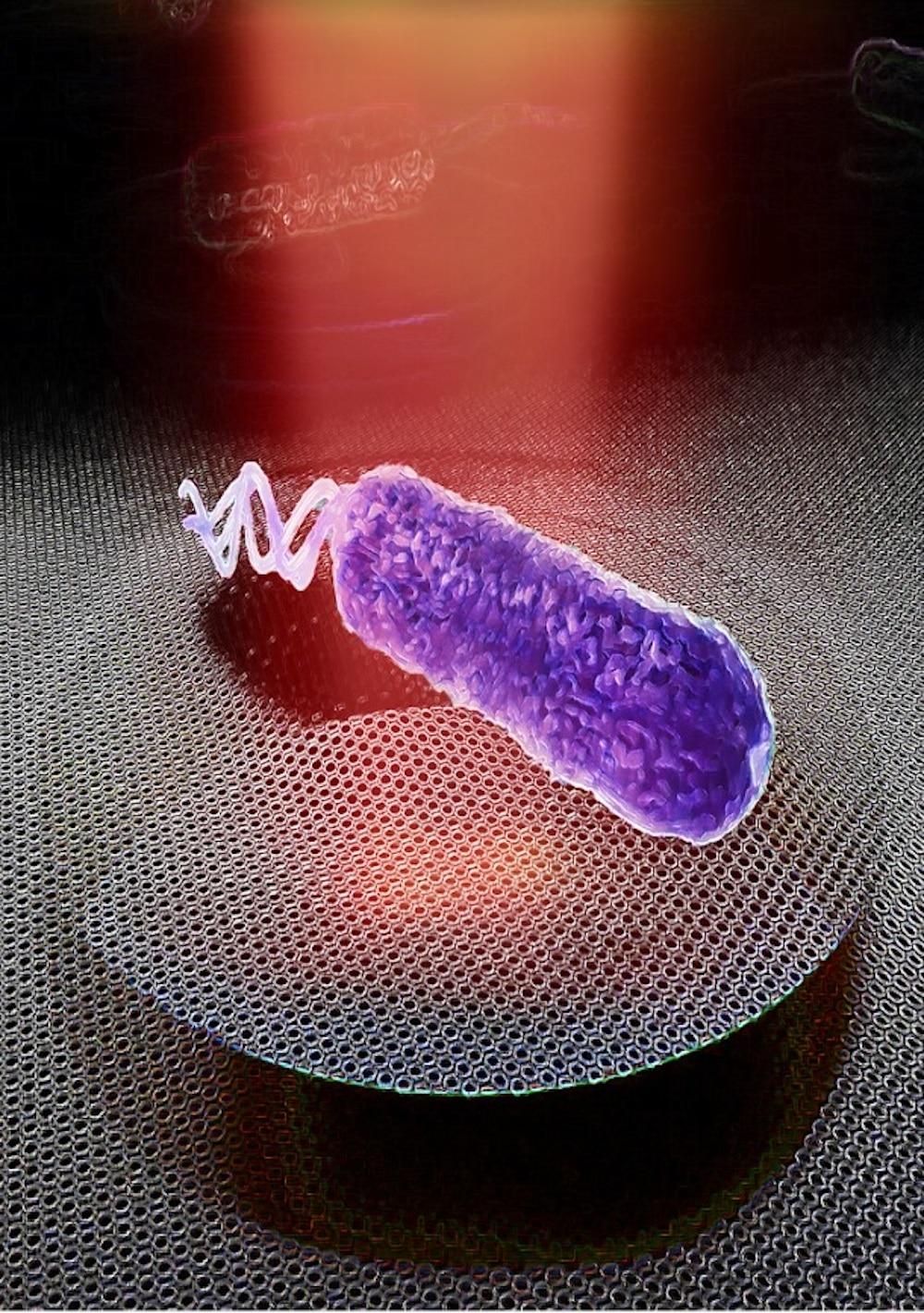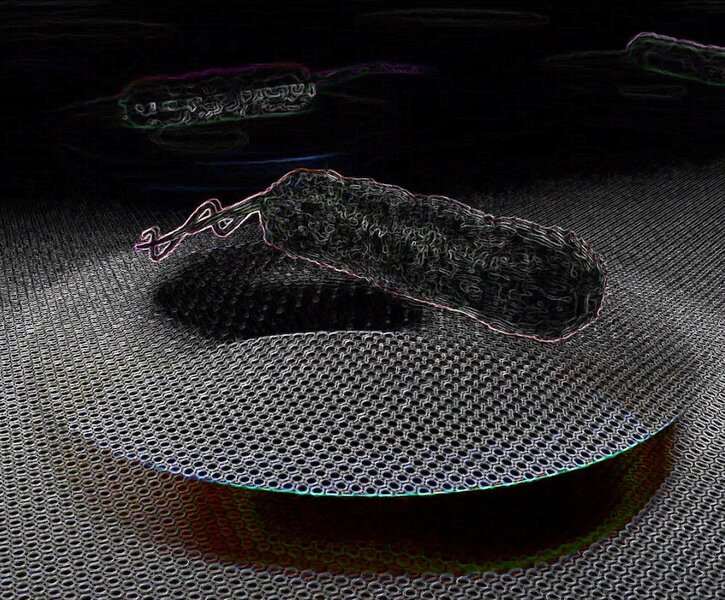Create a free profile to get unlimited access to exclusive videos, sweepstakes, and more!
Scientists recorded the sound of a single bacterium
It's the world's smallest and loneliest disco.

Science fiction has a long and storied relationship with shrinking. Alice shrank during her journey through Wonderland and Wayne Szalinski famously shrank not only his kids, but himself and his friends. Almost a decade earlier, Pat Kramer — played by Lily Tomlin — started shrinking after exposure to an experimental perfume in The Incredible Shrinking Woman. While Alice and Szalinski remained large enough to fit in the palm of a hand or ride an ant, Kramer continued shrinking until she vanished from sight and entered the microscopic world.
There, she might have had the unique experience of knowing what microbes sound like as they navigate the world of the very small. While microscopes have allowed us to peer into the microcosmos, our view of the microbial world has always been shrouded in silence, until now.
In a new paper published in the journal Nature Nanotechnology, Irek E. Rosłoń and colleagues from the Delft University of Technology reveal how they were able to record the sounds of a single bacterium using drums made of graphene.
“We didn’t really set out to record the sounds of bacteria, we were really just curious how far we could push the graphene,” Rosłoń told SYFY WIRE.
Researchers built incredibly small drums out of graphene; a two-dimensional material composed of carbon only one atom thick. This material has sparked something of a revolution in science over the past several years owing to its unique properties. The chemical relationships in graphene are such that the material is incredibly strong while remaining flexible. It’s so flexible, in fact, that it can register the minute movements of bacteria crawling along its surface.
“The tiny forces coming from the molecular machines that keep the bacteria alive, help it to grow, help it divide, and are picked up by the graphene and transduced,” Rosłoń said.
Those tiny vibrations in the graphene are measured by a laser interferometer and sent to a computer where they are converted to sound waves. Getting a single bacterium onto the graphene drums was a challenge but the researchers found an interesting way to make it happen.
By placing the drums horizontally under a vial containing bacteria-filled fluid and then quickly turning it vertically, they were able to get a single bacterium to land on the drum and attach before any others could join the party.
“It’s a matter of having good timing so the bacterium has time to fall from the vial onto the surface and then turning it quickly. If you time it well, you get one bacterium per drum,” Rosłoń said.
Once the team had acquired a signal, the next question was determining what was causing the sounds. Through a rigorous process of elimination, they determined that about 80% of the sound they measured came from bacterial flagella: microscopic appendages which help bacteria swim through their environment. The remaining 20% of recorded sound is, at present, a mystery.
“Even in bacteria without flagella, we saw some motion. We could still hear them. We’re trying to figure out what the processes are that are responsible for the last 20% we’re recording,” Rosłoń said.
Aside from just being cool, the ability to measure the sounds bacteria make could have life-saving applications in the medical field. Researchers and even primary care or emergency doctors could use these drums to assess bacterial response to antibiotics in real time.
“We realized when the bacteria are alive, we can hear them, but when you add an antibiotic, the sound diminishes. You can actually hear and understand that the antibiotic is having an effect and killing them,” Rosłoń said.
A doctor could feasibly use a system like this to evaluate if the bacteria invading an individual patient is resistant to particular antibiotics and dial in on the correct treatment without having to try multiple treatments and wait to see if a patient responds.
Looking forward, Rosłoń and colleagues are looking to see if different microbial species have unique sound profiles which could be used to identify them.
“It would be very nice to know if we’re hearing E. coli or hearing a bacillus. We’re still figuring out if we can make a fingerprint of the sound of a bacterium and tell what we’re hearing,” Rosłoń said.
In the future, your diagnosis and treatment could be determined in part by the sounds bacteria make when they’re shaking their buts on a two-dimensional drum. If nothing else, that should make you laugh, and laughter is the best medicine.



























